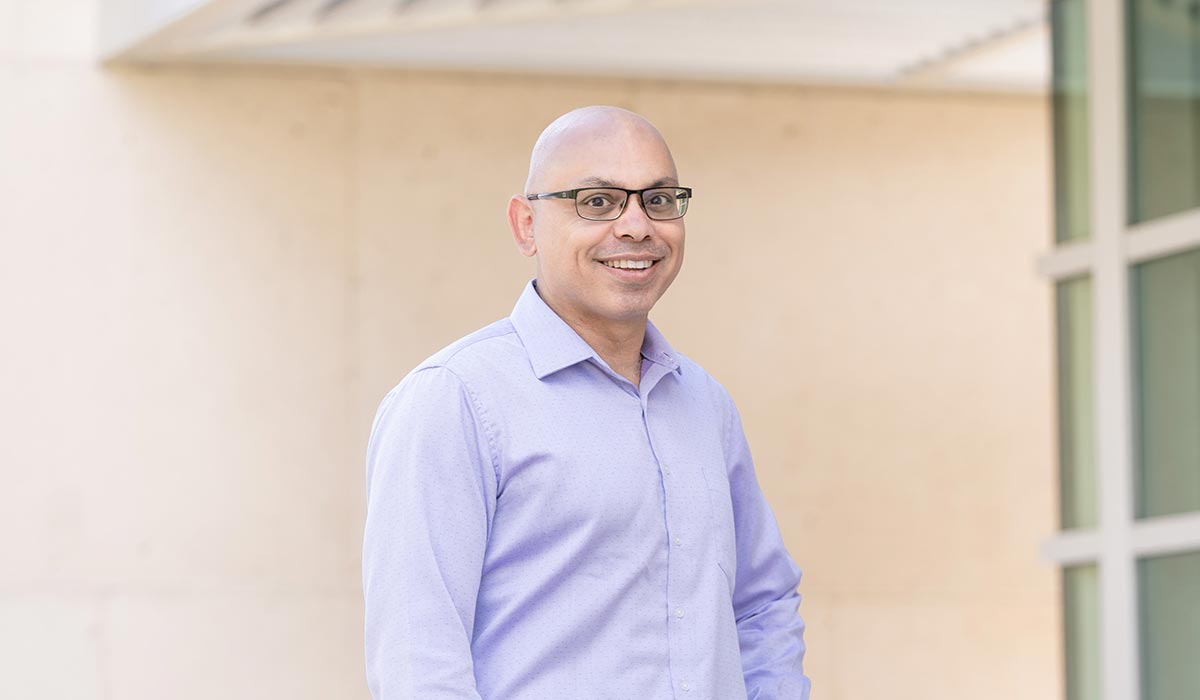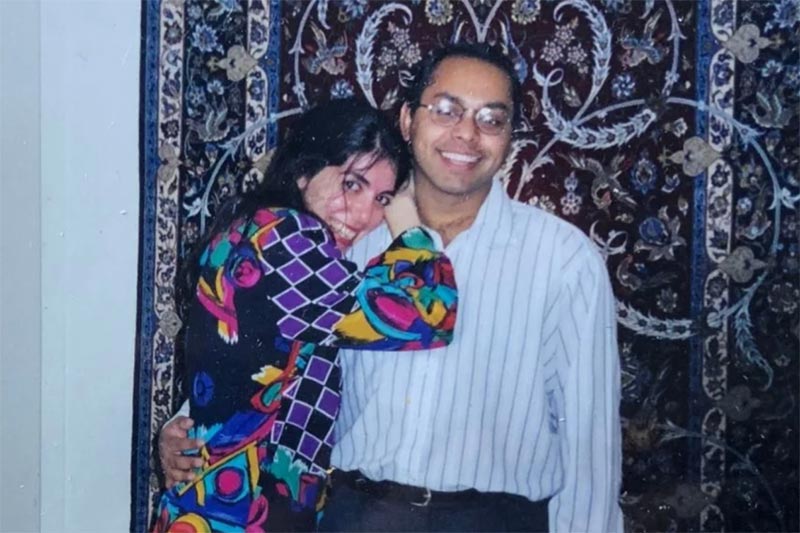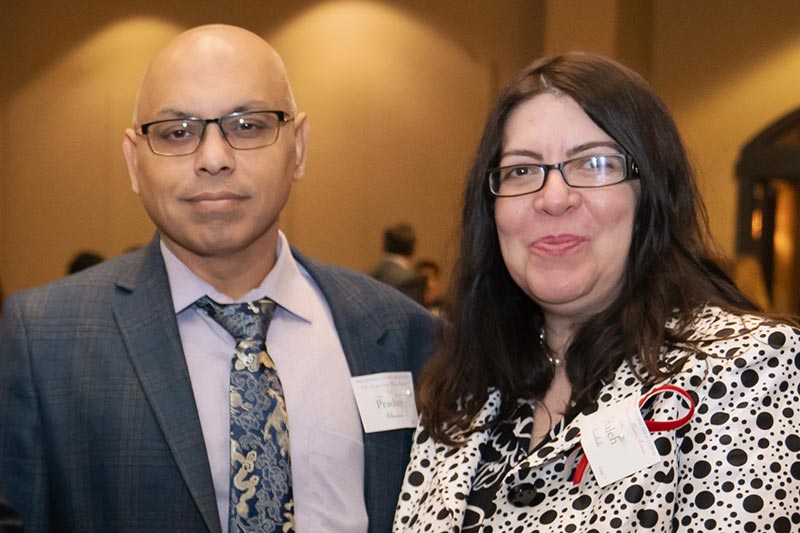UH Mechanical Engineer Elected to National Academy of Engineering

By Laurie Fickman
For actors, there are Oscars. Singers have Grammys. And for engineers? The highest award, the most coveted lifetime honor, is election into the National Academy of Engineers. They don’t elect many. Of the millions and millions of engineers in the world, this year the NAE chose 111 new members and 22 international members.
One of them is Elon Musk, founder and chief executive of SpaceX and Tesla Motors. One is Satya Nadella, chairman and chief executive of Microsoft Corp., following Bill Gates. One of them is the co-founder and chairman of vaccine giant Moderna, Inc., Noubar B. Afeyan.
And one of them is Pradeep Sharma, M.D. Anderson Chair Professor and department chair of Mechanical Engineering at the University of Houston Cullen College of Engineering.
It is rarefied air to be sure.
Sharma’s election brings to 16 the number of NAE members at the University of Houston.
“This is very, very meaningful because it is the highest honor an engineer can receive," Sharma said.
Academy membership honors those who have made outstanding contributions to "engineering research, practice, or education, including, where appropriate, significant contributions to the engineering literature" and to "the pioneering of new and developing fields of technology, making major advancements in traditional fields of engineering, or developing/implementing innovative approaches to engineering education."
In announcing Sharma’s election, the academy noted his establishing the field of flexoelectricity, leading to the creation of new materials and devices and insights in biophysical phenomena.
Nature has a few materials, called piezoelectrics, that can covert mechanical forces into electricity and vice-versa. Imagine artificial muscles that can move due to electrical signals and sense objection when a force or mechanical strain is applied. Flexoelectricity is a relatively understudied, exotic phenomenon that has the potential to provide similar functionality as piezoelectrics.
“Nature has provided us very few piezoelectric materials even though their applications in energy harvesting and in making sensors is very important. What we did was use theory to design materials that perform like piezoelectric ones, so that they can create electricity,” said Sharma.
In other words, he can turn rubber into electricity and that leads to untold applications in the field of soft, life-like robots.
This is very, very meaningful because it is the highest honor an engineer can receive. Pradeep Sharma
Sharma employs theoretical and computational approaches to understand physical phenomena across multiple disciplines — from materials science to biology. He uses methods of applied mathematics, continuum mechanics, atomistic and quantum simulations, among others, to carry out his research.
The same mathematical framework created by Sharma also works to understand biological membranes, such as those responsible for hearing, because for the hearing mechanism to work, the membranes of ear hair cells must convert mechanical motion into an electrical signal. His associated work has been applied to how some mechanics sense magnetic fields or artificial materials that can wirelessly harvest electrical energy from the remote action of magnetic fields.
“The recognition of Professor Sharma by the National Academy of Engineering highlights a career full of outstanding research that has contributed to the understanding of engineering and helped uncover solutions for some of the world’s most significant problems,” said Paula Myrick Short, former UH senior vice president for academic affairs and provost.
Sharma has worked his entire professional academic career at UH since 2004, after three years as a research scientist at General Electric. Still, after decades of discoveries and ages of accolades, membership in the NAE has humbled Sharma.
“This was hard to believe and is only now sinking in,” said Sharma, of when he received the announcement. “This is very, very meaningful because it is the highest honor an engineer can receive, and I've always looked up to the ones who have been members of the NAE, and I never thought I would be one of them. That’s not a cliché. I really mean it. It’s a very emotional feeling.”
The University is excited, too.
 Pradeep and Haleh together at University of Maryland, College Park, where they both earned their doctorate degrees. |
 Pradeep and Haleh at the 2021 Engineering Alumni Association Gala. |
“Induction into the National Academy of Engineering is the latest of many distinguished honors achieved by Dr. Sharma over the last decade, including being named a Fulbright Fellow, receiving the ASME Melville Medal, the James R. Rice Medal and the Charles Russ Richards Medal. He is also the only engineer in 2020 to receive the nationally prestigious Guggenheim Fellowship,” said Amr Elnashai, UH vice president for research and technology transfer. “We are very proud of Dr. Sharma’s accomplishments culminating in being elected to the NAE. To be so comprehensively recognized is not only a testament to his intellect but also of the intellectual environment that exists in our great University.”
Of course, the first thing Sharma did when he got the news was call and tell his partner in work and life, his wife, Haleh Ardebili, Bill D. Cook Professor of Mechanical Engineering, who works in a similar field, creating flexible batteries.
“She was very, very happy too. That is how you become successful, supporting one another like this. She seemed as proud of me as she is when our son achieves something." No surprise their 19-year-old is studying to be an engineer.
In fact, it was Ardebili that encouraged Sharma (the husband) to become a Ph.D, when he thought he just wanted to get a master’s degree and go to work. Meeting his wife in graduate school changed all that and Sharma credits her for the inspiration to earn a doctorate and his Ph.D. advisor for making him the scientist that he is now.
Sharma also credits the University and the Cullen College of Engineering, which includes his colleagues for their unwavering support of his work, without which nothing would be possible, he said.
“I also can’t speak highly enough about my mentors in the scientific community who have supported my work. It truly takes a village to achieve success in our field,” said Sharma.
After a lifetime of such success, Sharma is quick to point out what makes him proudest. “Besides family which includes the unconditional support of my parents, it is my students and collaborators,” he said, of the way he wants to spend his time now.
“Training the next generation of scientists to carry on. I have had my fair share of wonderful mentors and I hope I can be one for others also."